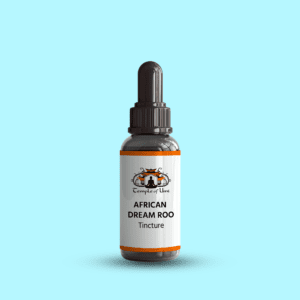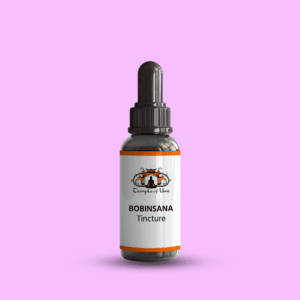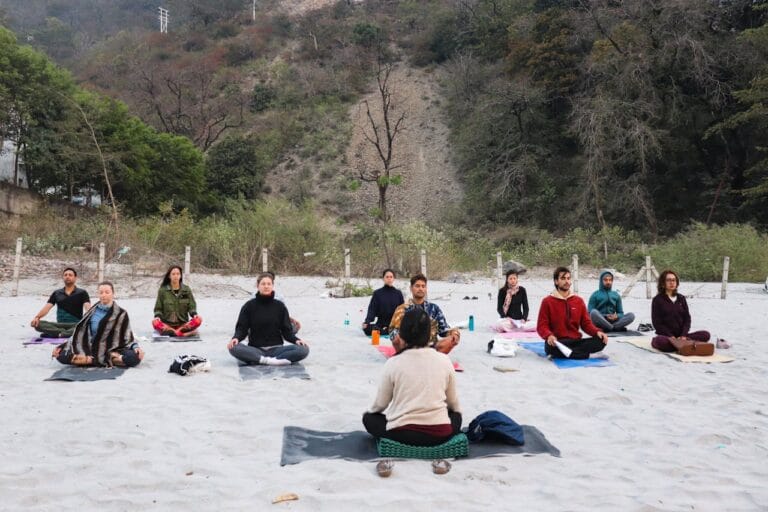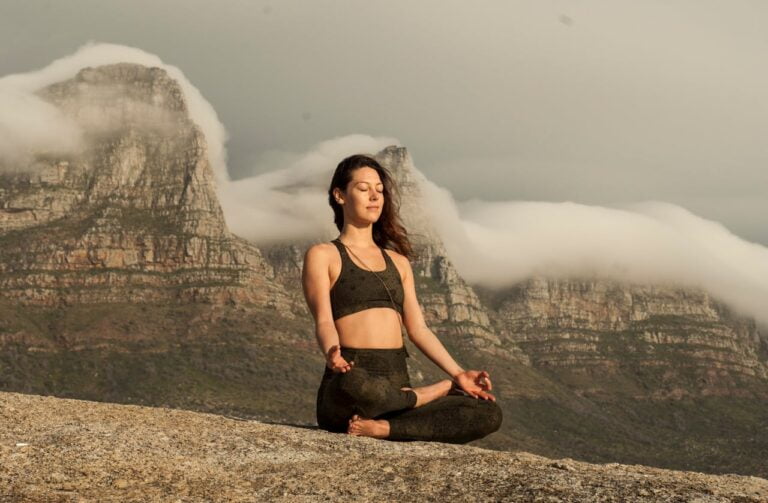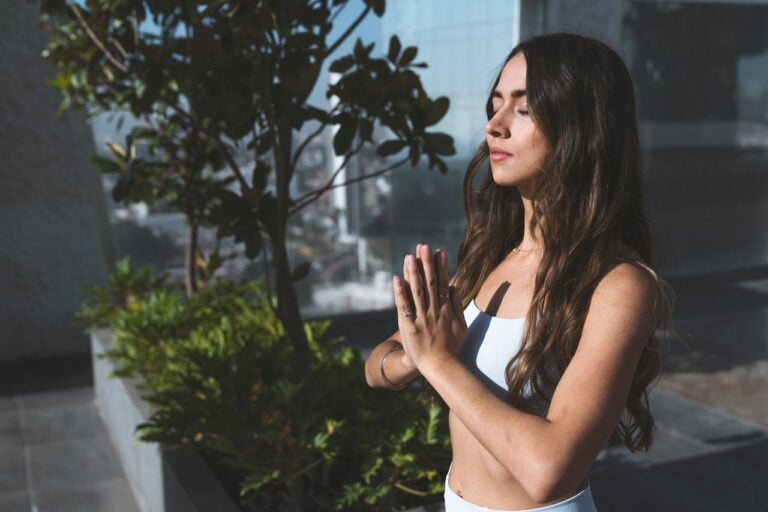Meditation techniques
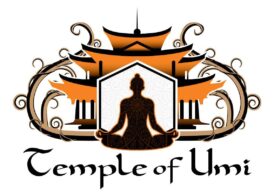
By Temple of Umi
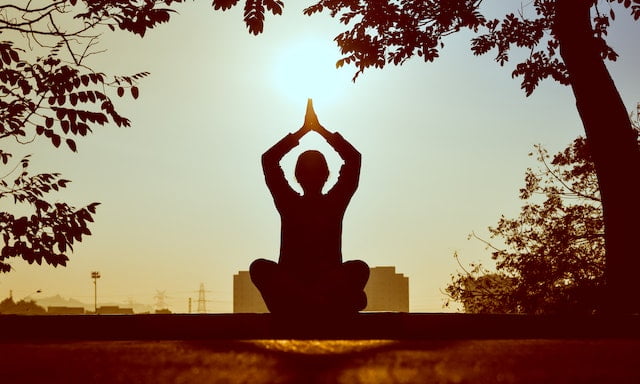
Table of Contents
Embark on a journey of self-discovery and well-being with our comprehensive guide to meditation techniques. Explore the profound benefits and embrace regular practice for a more fulfilling, productive life. Start your transformative journey now.
Introduction
Meditation, an ancient practice dating back thousands of years, has surged in popularity as a refuge from today’s fast-paced world. Meditation involves a deliberate attempt to focus and quiet the mind, offering many benefits ranging from improved mental clarity and stress reduction to enhanced physical health and emotional well-being. However, with various meditation techniques available, discovering the one that resonates with your needs and lifestyle is crucial for a sustained practice. This journey begins with understanding the essence of meditation, exploring its scientific backing, and debunking common myths surrounding it.
Understanding Meditation
- What is Meditation?
- Meditation is more than just a moment of peace; it’s a practice for cultivating mindfulness, enhancing concentration, and fostering a deep inner calm. Whether it’s through focusing on the breath, repeating a mantra, or observing thoughts without judgment, meditation techniques offer a pathway to tranquility and self-discovery.
- The Science Behind Meditation: How It Affects the Brain
- Research has shown that regular meditation can lead to significant changes in the brain, including increased gray matter density in areas associated with memory, empathy, and stress regulation. Additionally, meditation has been linked to reduced activity in the amygdala, the brain’s “fight or flight” center, which helps in managing anxiety and emotional responses.
- Common Misconceptions About Meditation
- Myth: You must empty your mind.
- Reality: The goal is not to banish thoughts but to observe them without attachment.
- Myth: Meditation requires hours of practice daily.
- Reality: Even short, daily sessions can yield profound benefits.
- Myth: Only certain people are capable of meditating.
- Reality: Meditation is accessible to everyone, regardless of age or background. Learn more.
Preparing for Meditation
- Creating a Conducive Environment for Meditation
- The correct setting can significantly enhance your meditation practice. Choose a quiet, comfortable spot where you won’t be disturbed. Consider dim lighting or candles and add elements like soft music or incense to create a soothing atmosphere.
- Finding Your Ideal Meditation Posture
- Comfort is critical to maintaining focus during meditation. Whether seated on a chair, cushion, or mat, ensure your back is straight but not tense, shoulders relaxed, and hands resting gently on your lap or knees. Experiment with various positions to find what works best for you.
- Tips for Setting Your Meditation Goals and Schedule
- Define Clear Objectives: Having a clear goal can motivate your practice, whether reducing stress, enhancing focus, or fostering self-awareness.
- Start Small: Begin with 5-10 minutes daily and gradually increase the duration as you become more comfortable.
- Be Consistent: Try to meditate at the same time each day to establish a routine that fits your lifestyle. Learn more.
By embracing the foundational aspects of meditation and preparing your mind and environment, you’re setting the stage for a rewarding journey into meditation techniques. Each step, from understanding the practice’s roots to crafting a conducive meditation space, is crucial in unlocking meditation’s full spectrum of benefits.
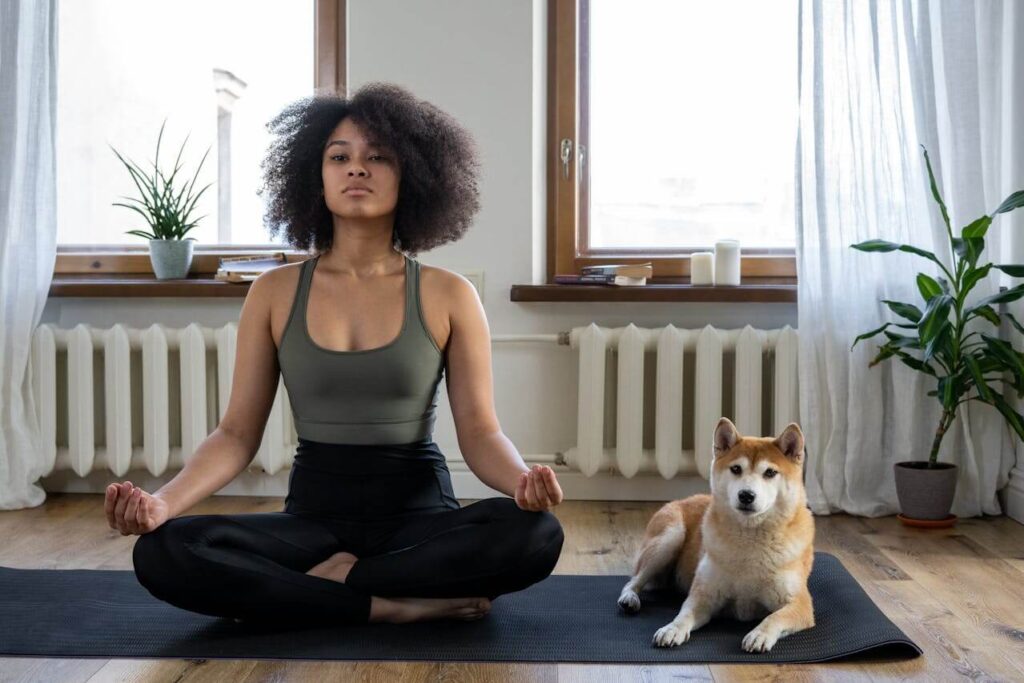
Types of Meditation Techniques
Exploring different meditation techniques is pivotal in the journey to mental clarity and emotional stability. Each technique offers unique benefits and pathways to mindfulness, helping individuals find the best method for their needs and preferences.
Mindfulness Meditation: The Art of Being Present
Mindfulness meditation is a practice rooted in the art of being present. It teaches practitioners to observe their thoughts, feelings, and sensations without judgment. The essence of mindfulness lies in awareness:
- Focus on your breath, noticing each inhale and exhale.
- Acknowledge wandering thoughts and gently guide your attention back to the present.
- Practice regularly to enhance concentration and reduce stress.
Transcendental Meditation: Going Beyond the Surface
Transcendental Meditation (TM) is a technique that transcends ordinary thinking to reach a state of pure consciousness. Characterized by simplicity and depth, it involves:
- Using a mantra, a word or sound repeated to aid concentration and facilitate transcendence.
- Practicing for 20 minutes twice a day, sitting comfortably with eyes closed.
- No concentration or effort is required, making it accessible for everyone.
Guided Meditation: The Power of Guided Imagery and Visualization
Guided meditation leverages the power of imagination and visualization to achieve a state of relaxation and focus. Through the guidance of a narrator:
- Participants are led through a series of vivid images and scenarios.
- It is particularly effective for beginners who may struggle with self-guided practices.
- It enhances the ability to visualize, improve mood, and relieve stress.
Zen Meditation (Zazen): The Path to Enlightenment
Zen meditation, or Zazen, is the heart of Zen Buddhism, offering a path to enlightenment and self-discovery. It emphasizes sitting in a lotus or half-lotus position, focusing on the following:
- I was observing the breath and posture with mindfulness.
- Letting thoughts, feelings, and images pass without getting entangled.
- A practice of simplicity, encouraging insight and presence.
Loving-Kindness Meditation (Metta): Cultivating Compassion
Loving-kindness meditation focuses on developing an attitude of love and compassion towards oneself and others. It involves:
- You are repeating phrases of goodwill and kindness towards oneself and extending that to others.
- It helps to reduce negative emotions, increase positive attitudes, and improve relationships.
- Encourages a greater sense of connection and empathy.
Meditation Techniques for Beginners
Embarking on a meditation practice can seem daunting to beginners, but with simple techniques, anyone can start their journey towards mindfulness and relaxation.
Simple Breathing Exercises to Ease into Meditation
Breathing exercises are the foundation of many meditation practices, serving as an accessible entry point for beginners:
- Focus solely on your breath, noticing the sensations of breathing in and out.
- Practice deep abdominal breathing to promote relaxation.
- It can be done anywhere, anytime to reduce stress and improve focus.
Body Scan Meditation for Awareness and Relaxation
The body scan is a technique to promote awareness and relaxation by focusing attention on different parts of the body:
- Start from the toes and move upwards, observing sensations without judgment.
- Encourages a deeper connection with your body, identifying areas of tension and relaxation.
- It can be practiced lying down, making it a comfortable option for many.
Visualization Techniques for Beginners
Visualization is a powerful tool for beginners to create a sense of calm and focus:
- Imagine a peaceful scene or setting, engaging all your senses to enhance the experience.
- It can include visualizing achieving goals or embodying certain qualities.
- Helps to improve mood, reduce anxiety, and enhance motivation.
Each of these meditation techniques offers unique pathways to mindfulness and well-being. Experimenting with different practices can help beginners identify the most effective approach to cultivating mindfulness, reducing stress, and enhancing life quality. Whether through the focused attention of mindfulness, the profound transcendence of TM, the guided journeys of visualization, the disciplined simplicity of Zen, or the compassionate focus of Metta, meditation techniques provide valuable tools for navigating the complexities of life with greater ease and insight. Learn more.
Advanced Meditation Techniques
Advanced Breath Control Techniques (Pranayama)
Pranayama, the ancient art of breath control, forms a core part of yoga and meditation practices. By mastering Pranayama, individuals can unlock significant benefits, ranging from reduced stress levels to enhanced concentration and mental clarity. Key techniques include:
- Ujjayi Pranayama (Ocean Breath): This technique mimics the sound of ocean waves. It involves deep, steady inhalation and exhalation through the nose, with a slight constriction at the back of the throat.
- Kapalabhati Pranayama (Skull Shining Breath): This energizing technique involves short, powerful, and passive inhales. It’s known for cleansing the lungs and invigorating the mind.
- Anulom Vilom (Alternate Nostril Breathing): Balancing the body’s energies involves inhaling through one nostril, holding the breath, and then exhaling through the opposite nostril. Learn more.
Kundalini Yoga: Awakening Inner Energy
Kundalini Yoga, often called the yoga of awareness, seeks to awaken the dormant energy at the base of the spine. This energy, known as Kundalini, is visualized as a coiled serpent. When awakened, it travels up through the chakras, leading to spiritual enlightenment. Key practices include:
- Dynamic postures and movements to prepare the body
- Mantra chanting to focus the mind and elevate the spirit
- Meditation sequences specifically designed to awaken Kundalini energy
Vipassana Meditation: Insight and Awareness
Vipassana, one of the oldest meditation techniques, emphasizes self-observation to achieve deep insights into the nature of existence. Practitioners learn to focus on the interconnection between mind and body, observing sensations without attachment or aversion. The goal is to understand the impermanent nature of all things, leading to a state of detachment and liberation. Learn more.
Meditation Tips and Tricks
Overcoming Common Meditation Challenges
Meditation offers profound benefits, yet many encounter obstacles. Here’s how to navigate common challenges:
- Distractions: Find a quiet space, and use ambient sounds or meditation music if complete silence isn’t possible.
- Consistency: Set a regular time for your practice. Even five minutes daily can make a difference.
- Physical Discomfort: Ensure you’re comfortable. Use cushions or chairs if traditional postures are challenging.
How to Integrate Meditation into Your Daily Routine
Making meditation a daily habit can seem daunting, but it’s achievable with these strategies:
- Morning Ritual: Start your day with a short meditation to set a positive tone.
- Mindful Moments: Use routine tasks (like brushing your teeth) as opportunities for mindfulness.
- Technology: Set reminders or use a meditation app to prompt your practice.
Using Meditation Apps and Resources to Enhance Your Practice
A wealth of digital tools can support your meditation journey. Consider:
- Guided Meditations: For those seeking structure, guided sessions offer a way to explore various techniques.
- Tracking Progress: Apps with tracking features can motivate you by showing your progress over time.
- Community and Support: Many apps offer forums where users can share experiences and tips, fostering a sense of community. Learn more.
The Benefits of Regular Meditation
Embarking on a regular meditation journey can transform your life. It offers many benefits extending from the core of your mental well-being to the outer realms of your physical health. Consistently embracing meditation techniques is a practice and a journey toward a rejuvenated self.
Mental and Emotional Benefits
- Enhanced Clarity and Focus: Regular meditation hones your focus, making it easier to sieve through daily distractions. It sharpens the mind, fostering a heightened sense of awareness and concentration.
- Reduced Stress and Anxiety Levels: One of the most celebrated benefits of meditation is its ability to reduce stress. It lowers cortisol levels, the stress hormone, alleviating anxiety and tension.
- Elevated Mood and Happiness: Meditation techniques often increase serotonin production, sometimes known as the happiness hormone, which naturally elevates your mood and fosters a positive outlook on life.
Physical Health Benefits
- Improved Sleep Patterns: Regular meditation can significantly enhance sleep quality by promoting relaxation and setting the stage for a deeper, more restful night’s sleep.
- Lower Blood Pressure: By reducing stress and promoting relaxation, meditation can also contribute to lowering blood pressure, reducing the risk of heart disease.
- Enhanced Immune System: Meditation has been linked to better immune function. A relaxed body and mind can fight off illness more effectively than one under constant stress.
Long-Term Effects on Well-being and Productivity
- Sustained Well-being: The cumulative effect of daily meditation is a profound sense of well-being, resilience against stress, and a general feeling of peace and balance.
- Boosted Productivity: With improved focus, clarity, and reduced stress levels, individuals often find themselves more productive at work and in their personal lives.
- Personal Growth and Self-Discovery: Regular meditation encourages reflection and can lead to profound personal insights, fostering growth and a deeper connection with one’s inner self. Learn more.

Final words
Reflecting on the meditation techniques covered, it’s clear that the journey into meditation is not just about the moments of silence but the transformation those moments bring into our lives. From mindfulness meditation to more advanced practices, each technique offers a pathway to many benefits that enhance our mental, emotional, and physical health.
I encourage you to explore and practice regularly, allowing yourself the space and time to experience the profound changes that meditation can bring. Remember, the journey of meditation is unique to each individual; it’s a personal exploration into the depths of your being, a journey that promises growth, peace, and well-being.
- Sacred Plant Medicine Retreats in Georgia
- 5 Ayahuasca Retreats in California Worth Exploring
- 7 Best Aya Retreats in America. Click here.
- Mcdonough Ayahuasca retreat
- Conley Ayahuasca retreat
- Whitesburg Ayahuasca retreat
- Brooks Ayahuasca retreat
- Gay Ayahuasca retreat
- Williamson Ayahuasca retreat
- Orchard Hill Ayahuasca retreat
- Glenn Ayahuasca retreat
- Luthersville Ayahuasca retreat
- Shady Dale Ayahuasca retreat
- Bowdon Junction Ayahuasca retreat
- Sargent Ayahuasca retreat
- Greenville Ayahuasca retreat
- Lovejoy Ayahuasca retreat
- Winston Ayahuasca retreat
- Rutledge Ayahuasca retreat
- Moreland Ayahuasca retreat
- Molena Ayahuasca retreat
- Lebanon Ayahuasca retreat
- Good Hope Ayahuasca retreat
- Haralson Ayahuasca retreat
- An Inclusive List of Psychedelic Quotes
- Mount Ayahuasca retreat
- Grantville Ayahuasca retreat
- Pine Lake Retreat near
- Rydal Ayahuasca retreat
- Porterdale Ayahuasca retreat
- Waco Ayahuasca retreat
- Temple Ayahuasca retreat
- Bethlehem Ayahuasca retreat
- Jenkinsburg Ayahuasca retreat
- Adairsville Ayahuasca retreat
- Red Oak Ayahuasca retreat
- Woodbury Ayahuasca retreat
- Cassville Ayahuasca retreat
- Redan Ayahuasca retreat
- North Decatur Ayahuasca retreat
- Grantville Ayahuasca retreat
- Hillsboro Ayahuasca retreat
- Jackson Ayahuasca retreat
- Braselton Ayahuasca retreat
- Zebulon Ayahuasca retreat
- Flovilla Ayahuasca retreat
- Auburn Ayahuasca retreat
- Warm Springs Ayahuasca retreat
- Scottdale Ayahuasca retreat
- Lithia Springs Ayahuasca retreat
- Villa Rica Ayahuasca retreat
- Grayson Ayahuasca retreat
- Sunny Side Ayahuasca retreat
- Senoia Ayahuasca retreat
- Locust Grove Ayahuasca retreat
- Chamblee Ayahuasca retreat
- Fairburn Ayahuasca retreat
- Snellville Ayahuasca retreat
- Monticello Ayahuasca retreat
- Union City Ayahuasca retreat
- Tallapoosa Ayahuasca retreat
- Bremen Ayahuasca retreat
- Hampton Ayahuasca retreat
- Monroe Ayahuasca retreat
- Marble Hill Ayahuasca retreat
- Madison Ayahuasca retreat
- Dawsonville Ayahuasca retreat
- Felton Ayahuasca retreat
- Concord Ayahuasca retreat
- Mansfield Ayahuasca retreat
- Taylorsville Ayahuasca retreat
- Roopville Ayahuasca retreat
- Turin Ayahuasca retreat
- Franklin Ayahuasca retreat
- Clarkdale Ayahuasca retreat
- Talking Rock Ayahuasca retreat
- Jersey Ayahuasca retreat
- Kingston Ayahuasca retreat
- Bostwick Ayahuasca retreat
- North Metro Ayahuasca retreat
- Meansville Ayahuasca retreat
- Social Circle Ayahuasca retreat
- White Ayahuasca retreat
- Rhode Island Ayahuasca retreat
- Maryland Ayahuasca retreat
- Delaware Ayahuasca retreat
- New Jersey Ayahuasca retreat
- Connecticut Ayahuasca retreat
- Massachusetts Ayahuasca retreat
- Hampshire Ayahuasca retreat
- Pennsylvania Ayahuasca retreat
- New York Ayahuasca retreat
- Florida Ayahuasca retreat
- South Carolina Ayahuasca Retreat
- North Carolina Ayahuasca Retreat
- West West Virginia Ayahuasca retreat
- Virginia Ayahuasca retreat
- Ohio Ayahuasca retreat
- Alabama Ayahuasca retreat
- Mississippi Ayahuasca retreat
- Tennessee Ayahuasca retreat
- Kentucky Ayahuasca retreat
- IndianaAyahuasca retreat
- ILLINOIS Ayahuasca retreat
- Missouri Ayahuasca retreat
- Arkansas Ayahuasca retreat
- Louisiana Ayahuasca retreat
- Texas Ayahuasca retreat
- Oklahoma Ayahuasca retreat
- KansasAyahuasca retreat
- Ayahuasca retreats near me in Experiment.
- A wellness retreat in Georgia
- What is Ayahuasca?
- Embark on a Journey of Transformation with Spiritual Healing
- Unveiling Healing Energy at the Temple of Umi
- 10 Energy Healing Techniques to Transform Your Life
- Where to get Ayahuasca in the USA
- Top Ayahuasca retreats in the USA. Learn more.
- Cost of Ayahuasca Retreat: Balancing Cost and Experience. Learn more.
- What is trauma bonding?
- A Journey into the Healing Properties of Psychedelic Mushrooms. Learn more.
- Ayahuasca Retreat Georgia – Experience Spiritual Awakening
- Spiritual Retreats Georgia
- Shaman in America Exploration
- Shamanism – Shamanic healing
- Shaman Healing Guide
- Ayahuasca ceremonies Ayahuasca ceremonies near you in the USA
- Ayahuasca Experience
- DMT Journey, Benefits, and Side Effects
- Iowaska – What is it?
- Plant medicine retreats in Georgia
- Why massage is beneficial, according to a cardiologist.
- Are mushrooms truffles – What Is a Truffle?
- 11 Best Ayahuasca Retreats in the USA for Spiritual Healing
- What is Rapé?
- What is a Tincture?
- Where to find Ayahuasca near me
- Healing retreats USA
- Best Retreats USA

